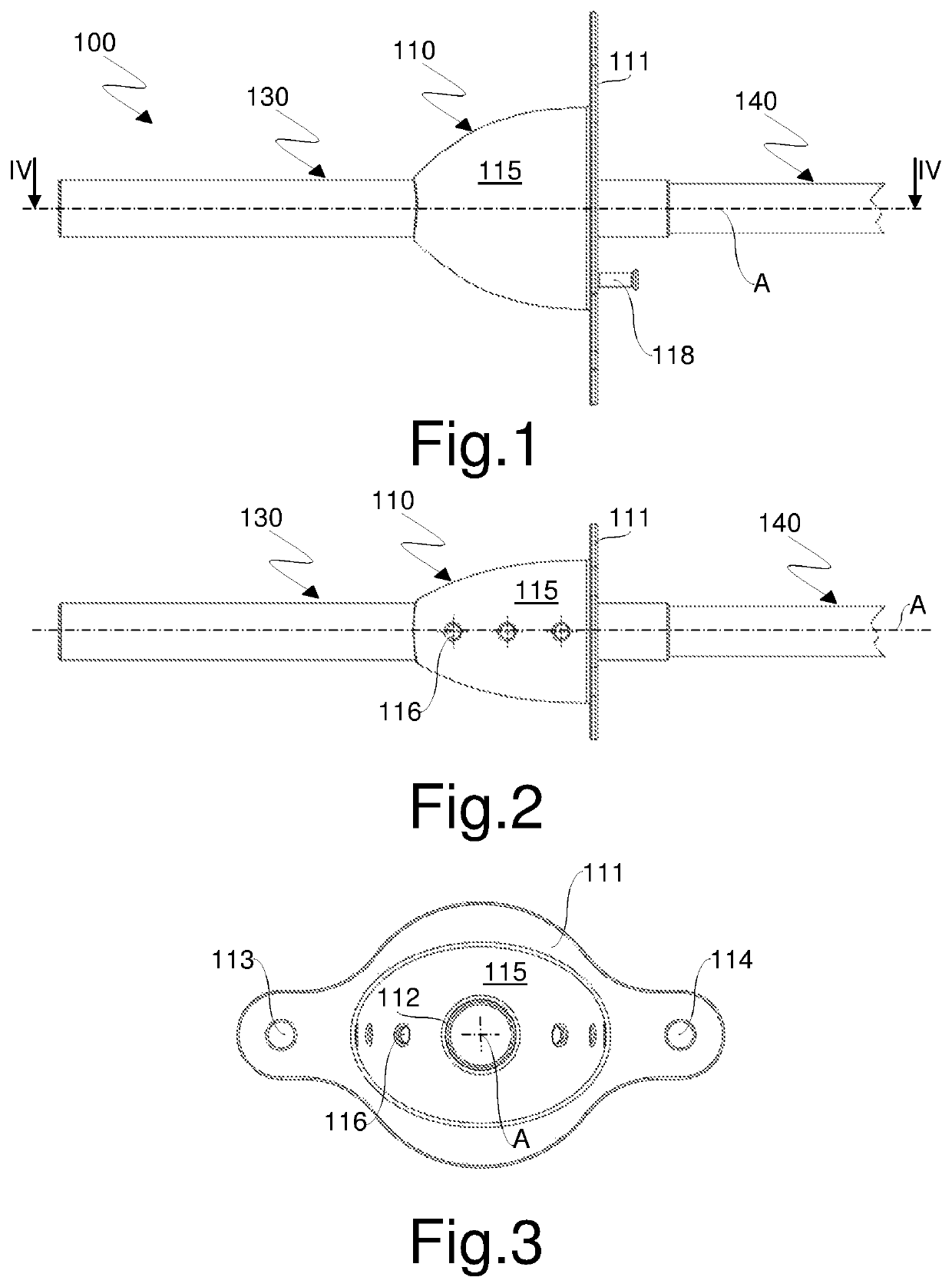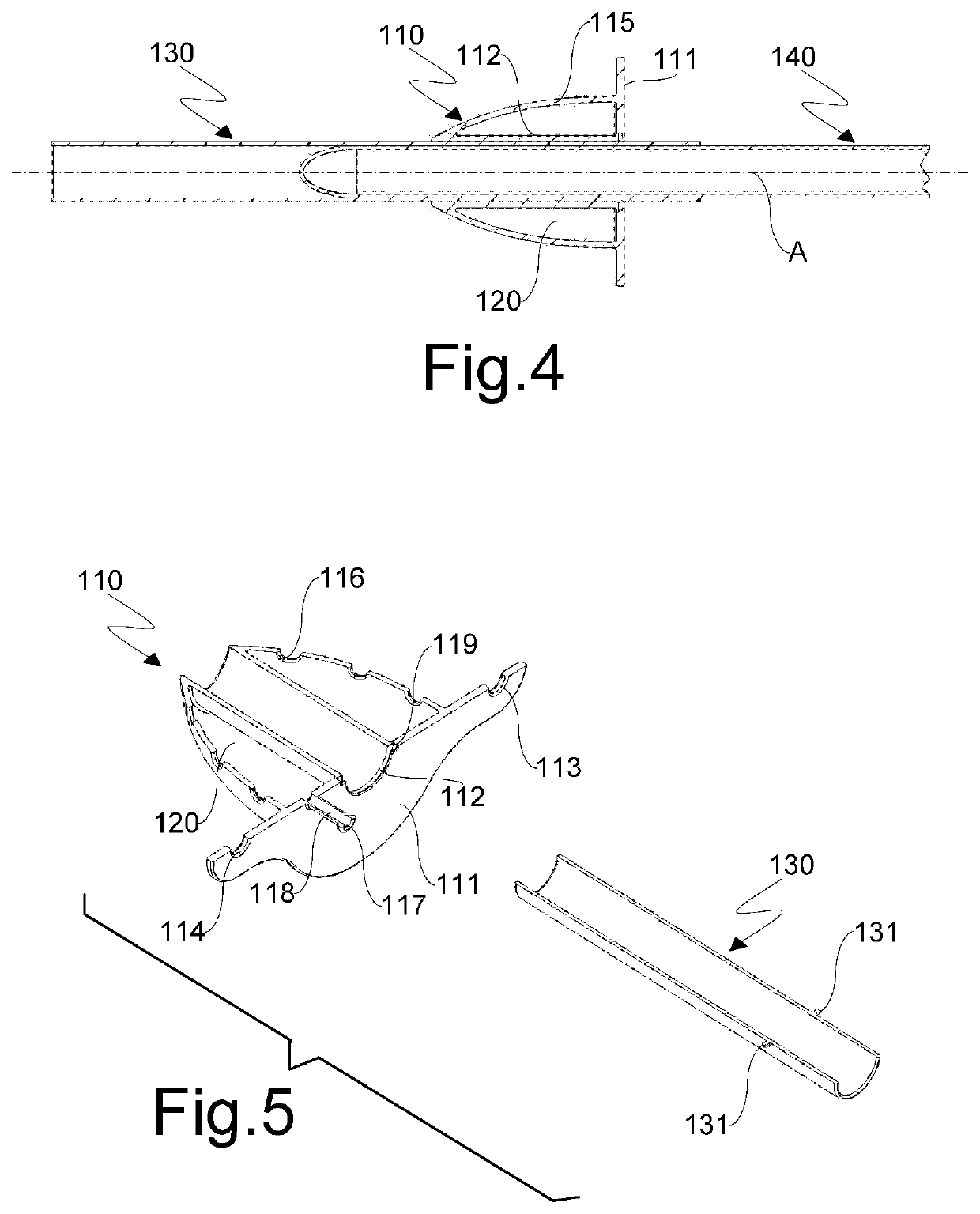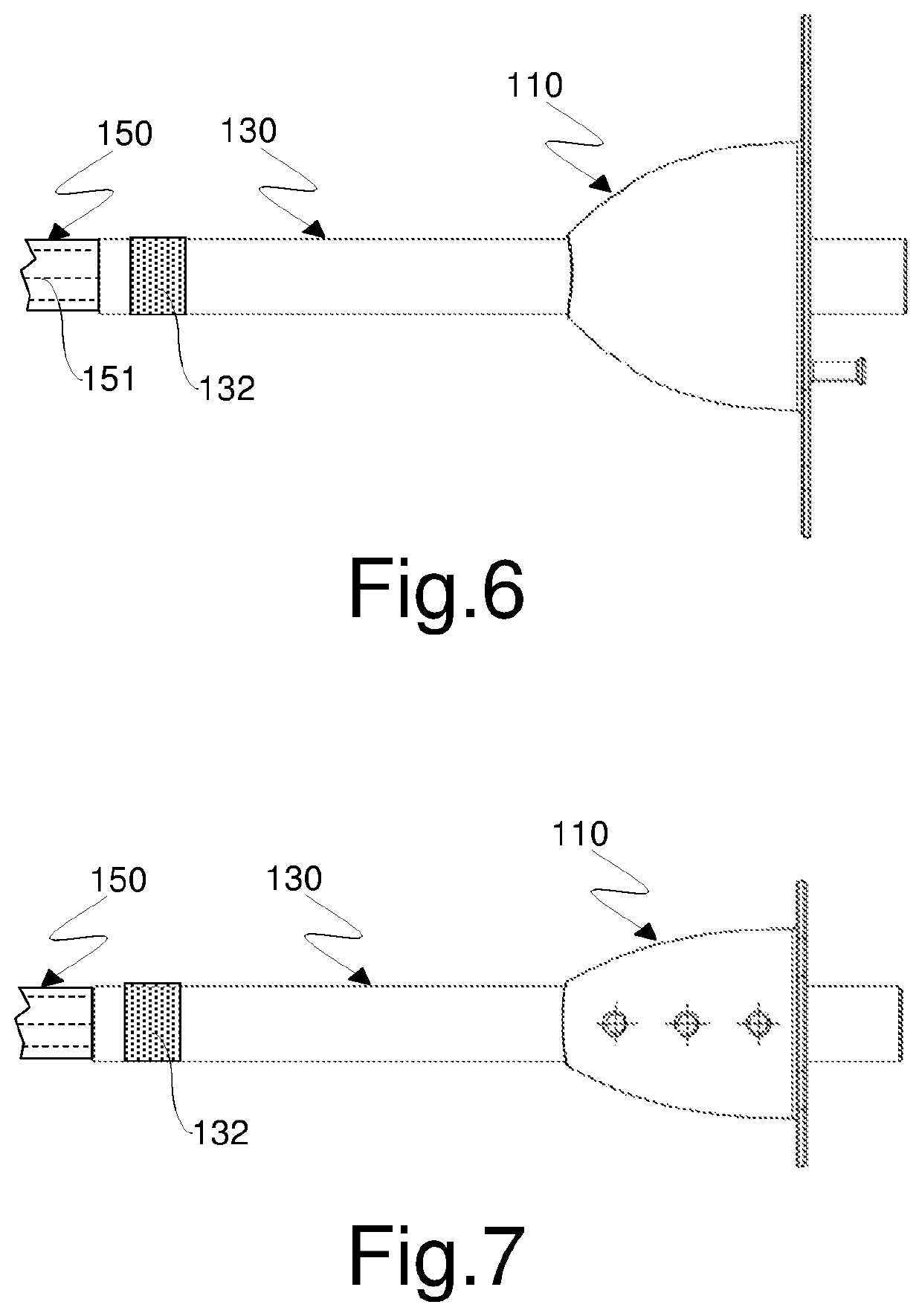Instrument for accessing and visualizing hollow organs
a hollow organ and instrument technology, applied in the field of hollow organ accessing and visualizing instruments, can solve the problems of unintentional tightening of teeth by patients during endoscopic examination, affecting the patient's experience of laryngobronchoscopy, so as to avoid the onset of coughing and choking sensation, minimize discomfort and pain, and reduce discomfort and pain
- Summary
- Abstract
- Description
- Claims
- Application Information
AI Technical Summary
Benefits of technology
Problems solved by technology
Method used
Image
Examples
Embodiment Construction
[0038]With reference initially to FIGS. 1 to 5, an instrument for accessing and visualizing hollow organs according to the invention is generally indicated by reference numeral 100.
[0039]Instrument 100 comprises a mouthpiece 110 configured to be inserted into a patient's mouth. The mouthpiece 110 comprises, in a known manner, a mask 111 which is perforated, for example in the center, and a sleeve 112 having a generally cylindrical shape and a circular or elliptical cross-section which extends from the hole formed in the mask 111 in a direction substantially perpendicular to it, thereby defining a channel suitable for allowing the introduction of a flexible tubular element. The mask 111 also comprises in a known manner a pair of through openings 113, 114, for example of circular shape, obtained at its opposite ends with respect to an axis A of the sleeve 112 and configured to allow the assembly of a band (not shown) which is elastic or of another suitable material for maintaining the...
PUM
 Login to View More
Login to View More Abstract
Description
Claims
Application Information
 Login to View More
Login to View More - R&D
- Intellectual Property
- Life Sciences
- Materials
- Tech Scout
- Unparalleled Data Quality
- Higher Quality Content
- 60% Fewer Hallucinations
Browse by: Latest US Patents, China's latest patents, Technical Efficacy Thesaurus, Application Domain, Technology Topic, Popular Technical Reports.
© 2025 PatSnap. All rights reserved.Legal|Privacy policy|Modern Slavery Act Transparency Statement|Sitemap|About US| Contact US: help@patsnap.com



